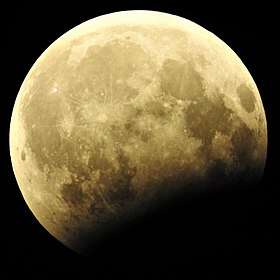November 2002 lunar eclipse
A penumbral lunar eclipse took place on November 20, 2002, the last of three lunar eclipses in 2002.
| Penumbral Lunar Eclipse November 20, 2002 | |
|---|---|
 The moon passed (right to left) through the Earth's southern penumbral shadow. | |
| Series (and member) | 116 (57 of 73) |
| Date | 20 November 2002 |
| Duration (hr:mn:sc) | |
| Penumbral | 4:24:18 |
| Contacts | |
| P1 | 23:34:28 UTC |
| Greatest | 1:46:36 |
| P4 | 3:58:46 |
 The moon's path across shadow in Taurus. | |
Visibility

Relation to other lunar eclipses
Eclipses of 2002
- A penumbral lunar eclipse on May 26.
- An annular solar eclipse on June 10.
- A penumbral lunar eclipse on June 24.
- A penumbral lunar eclipse on November 20.
- A total solar eclipse on December 4.
It is the second of four lunar year cycles, repeating every 354 days.
| Lunar eclipse series sets from 2002–2005 | ||||||||
|---|---|---|---|---|---|---|---|---|
| Descending node | Ascending node | |||||||
| Saros Photo |
Date View |
Type Chart |
Gamma | Saros Photo |
Date View |
Type Chart |
Gamma | |
| 111 | 2002 May 26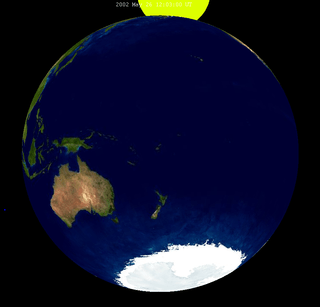 |
penumbral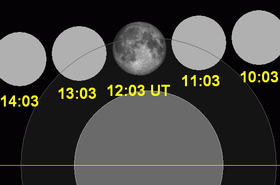 |
1.1759 | 116 | 2002 Nov 20 |
penumbral |
-1.1127 | |
121 |
2003 May 16 |
total |
0.4123 | 126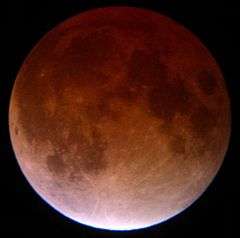 |
2003 Nov 09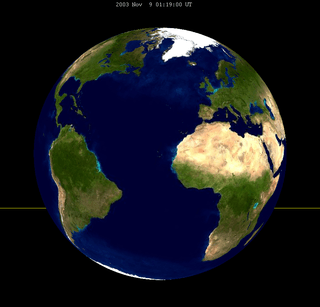 |
total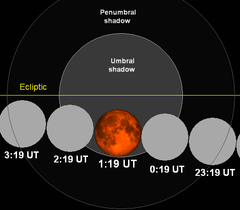 |
-0.4319 | |
131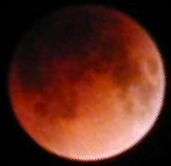 |
2004 May 04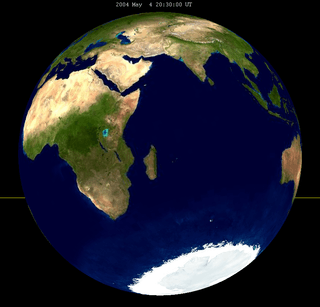 |
total |
-0.3132 | 136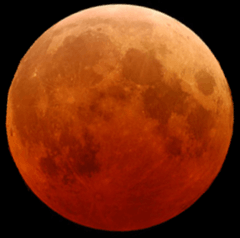 |
2004 Oct 28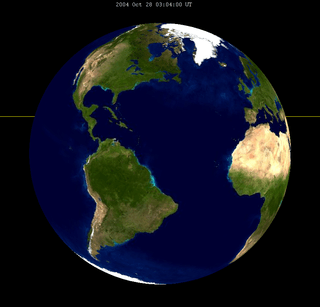 |
total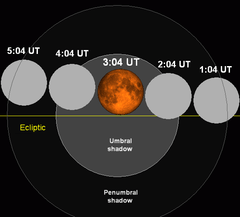 |
0.2846 | |
| 141 | 2005 Apr 24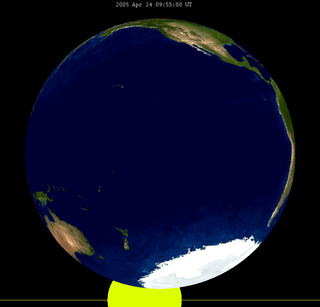 |
penumbral |
-1.0885 | 146_(cropped).jpg) |
2005 Oct 17 |
partial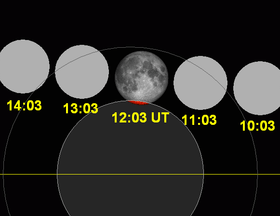 |
0.9796 | |
| Last set | 2002 Jun 24 | Last set | 2001 Dec 30 | |||||
| Next set | 2006 Mar 14 | Next set | 2006 Sep 7 | |||||
Half-Saros cycle
A lunar eclipse will be preceded and followed by solar eclipses by 9 years and 5.5 days (a half saros).[1] This lunar eclipse is related to two partial solar eclipses of Solar Saros 123.
| November 13, 1993 | November 25, 2011 |
|---|---|
 |
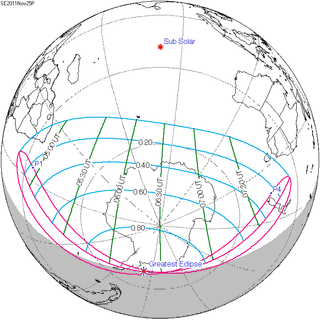 |
gollark: Which is apparently NP-hard, since someone managed to encode "SAT solving" or whatever in it.
gollark: Anyway, I'm aiming for final product + recipes + available items -> ingredients and list of crafting steps.
gollark: It has one?
gollark: Presumably, for the desired item, see all the inputs, see if any of them are already inventoried, if not check the inputs to *that* via the same process, add that crafting step to queue.
gollark: I'm still not sure how to get useful autocrafting out of it.
See also
- List of lunar eclipses
- List of 21st-century lunar eclipses
References
- Mathematical Astronomy Morsels, Jean Meeus, p.110, Chapter 18, The half-saros
This article is issued from Wikipedia. The text is licensed under Creative Commons - Attribution - Sharealike. Additional terms may apply for the media files.
